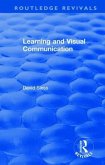Bachelor Thesis from the year 2023 in the subject English Language and Literature Studies - Other, grade: 1,3, University of Stuttgart (Institut für Literaturwissenschaft Englische Literaturen), course: American Superhero Comics, language: English, abstract: The bachelor thesis "Visual Worldbuilding in Alan Moore and Dave Gibbons' Watchmen" takes a close look at graphic novel's visual motifs, visual settings, real-world references. It examines how they enhance the story's characters, plot development, and major themes. It furthermore analyzes the graphic novel's high level of detail and meticulous world-building through text and visuals. From the Avengers of the Marvel Cinematic Universe through The Boys on Amazon Prime Video to the DC League of Super-Pets ¿ today, superheroes in any shape or form rule the entertainment industry. Throughout the past few years, movie programs and box offices around the world have been dominated by superhero movies, countless seasons of superhero TV series have been binged by millions every week, and innumerable superhero-related merchandise items have been sold to children and adults alike. Unfazed by a predominantly digitalized world, even the superhero comic book and graphic novel industry has been steadily growing and is projected to continue doing so ("Comic Book Sales"). Historically, there is one comic that is considered to have set the tone and pave the way for the genre's development and status of today: Alan Moore and Dave Gibbons' Watchmen ¿ a twelve-issue limited series published monthly by DC Comics between 1986 and 1987 and merged later into a single graphic novel in 1987. According to the BBC, the release of Watchmen was the "moment comic books grew up" and when the public's views on the art form "changed" (Barber). Watchmen's status as a revolutionary piece of literature is further perpetuated in TIME magazine's list of the 100 best English-language novels published since 1923. There, Watchmen sticks out as the stand-alone graphic novel being listed among literary classics such as To Kill a Mockingbird, The Great Gatsby, Animal Farm, and Lord of the Flies (Grossman). In any case, Watchmen's spot on the list is justified because the graphic novel is not a classic good-versus-evil, superhero-versus-villain comic story but rather a hybridity of genres that includes characteristics such as those of a murder mystery and detective story while incorporating elements of science fiction, dystopian fiction, and psychological realism. Moreover, writer Alan Moore created 'superhero' characters that are not impeccable, morally upright, and two-dimensional, but rather three-dimensional characters with flawed personalities and personal problems.
Hinweis: Dieser Artikel kann nur an eine deutsche Lieferadresse ausgeliefert werden.
Hinweis: Dieser Artikel kann nur an eine deutsche Lieferadresse ausgeliefert werden.








